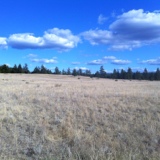Information
-
Document No.
-
Area
-
Tenure Holder
-
Conducted on
-
Prepared by
-
Location
-
Personnel
Site Description
-
BEC Zone
- AT
- BGxh1
- BGxh2
- BGxh3
- BGxw1
- BGxw2
- BWBSdk1
- BW
Observations
Hydrologic and soils
-
Organic material protects the soil surface from raindrop impact and evaporative effects of the sun and wind.<br>Note: most of the ground surface should be protected by live vegetation (including biological soil crusts) or dead plant material.
-
Water will easily infiltrate the soil surface (absence of physical soil crusting, capping).<br>Note: soil surface conditions should allow for precipitation to penetrate. Soil crusting or capping should not occur. Do not confuse physical crusting with biological soil crusts.
-
Subsurface soil conditions support infiltration (compaction layers are uncommon).<br>Note: check for soil compaction or impermeable layers.
-
Vegetation and plant litter detain overland water flow.<br>Note: no signs of filling. Sediment is trapped.
Biotic/Vegetation
-
The plant community is showing good vigor (including recruitment of decreases).<br>Note: Proper growth form and stature, community structure, and species composition of native decreaser species.
-
The plant community reflects a fully occupied root zone.<br>Note: Dig a soil pit. Roots should penetrate deeply into the soil profile.
-
A diversity of habitat structure for vertebrate and invertebrate life is apparent.<br>Note: If you build it they will come. Consider soil organisms, insects, and vertebrates.
Erosion/Deposition
-
Evidence of rills, gullies, pedestalling, and other excessive soil movement is uncommon. <br>Note: Vegetation should prevent formation of these erosional features. Old rills and gullies should be revegetated.
Mineral Cycle
-
Plant cover and litter create a micro-site environment conducive to biological breakdown.<br>Note: dead plants should decompose rather than oxidize on the stem. In order for this to happen it needs contact with the soil surface. Is dung breaking down rapidly, or does it remain intact for years.
-
Biological soil crusts and nitrogen fixing forbs and shrubs are present as in reference condition.<br>Note: Nitrogen poor grasslands will be yellow-green in colour and dung/urine patches will show up as deep green. Biological soil crusts are essential in the carbon and nitrogen cycles.
Notes
-
Is the desired plant community present (diversity, species, age, structure, form)
-
Do seeps and springs support phreatophytic plants?
-
Are there outside factors affecting the dynamics of the system
Choose factors based on who made the changes
-
Land uses beyond the control of the holder
- Logging/ Silviculture
- Ingrowth/ Encroachment
- Fire
- Wildfire
- Recreation
- Other
-
Land uses under the control of the holder
- Brushing/ Clearing
- Dams
- Draining
- Fire
- Grazing
- Mowing
- Range Structures
- Seeding
- Other
-
Photo
-
Litter
- nil
- low
- mod-good
- excessive
-
Missing species
-
Missing layers
-
Soil type
-
Soil texture
-
Salinity
-
Notes
Degree Altered by Livestock
-
-
Use levels
- Nil
- Light
- Moderate
- Heavy
- Extreme
-
Seral stage
- PNC (>= 75%)
- Late (50-75% similar)
- Mid (25-50% similar)
- Early (0-25% similar)
-
Degree altered
- Not
- Slightly
- Moderately
- Substantially
- Greatly
-
Missing species
-
Indicator species
Plant community
-
Grass/ Forbs
If switch is on
-
Grass/ Forb Species
-
Leaf stage






